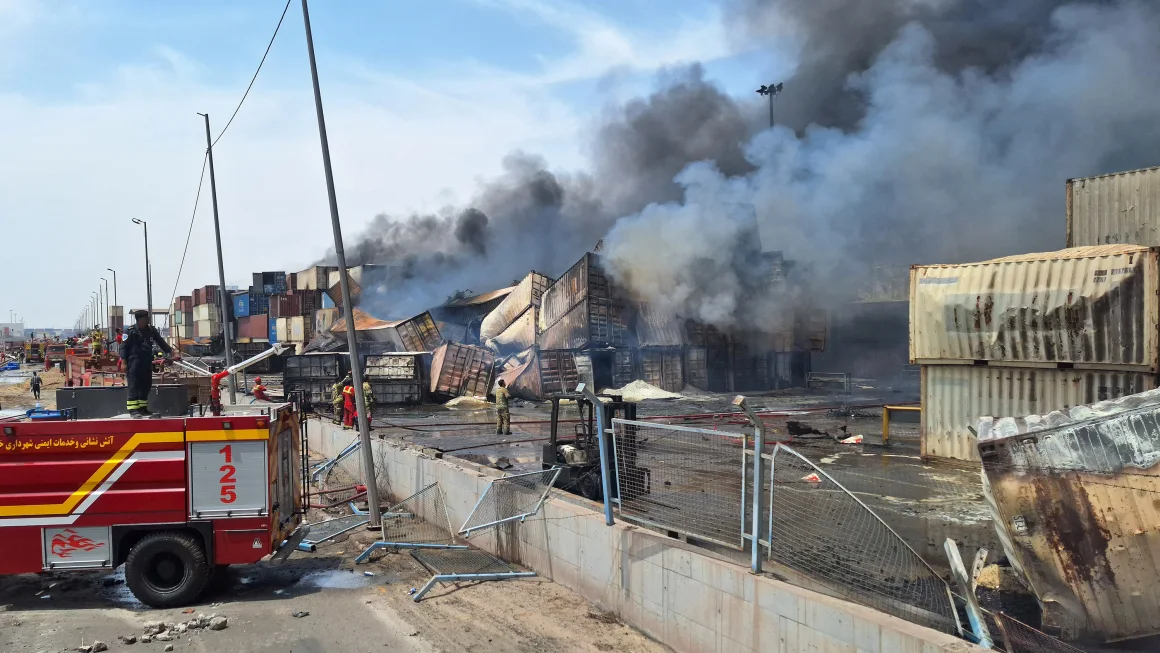A massive explosion at the port of Bandar Abbas in Iran killed at least 40 people on Saturday, with more than 1,000 others injured, according to Iranian state TV reports cited by the Associated Press.
Authorities have yet to confirm what triggered the disaster, although unverified reports suggest chemicals possibly linked to missile propellant may have been involved.
Eyewitness accounts and videos suggest that the incident began when chemicals stored in shipping containers caught fire, setting off a much larger explosion. In a surveillance video shared by the Fars news agency, a small blaze can be seen starting among containers, with workers moving away before a huge blast cuts the feed.
Iran’s Red Crescent head, Pir Hossein Kolivand, said 190 of the injured remain hospitalized. Emergency teams worked through the weekend, using aircraft to douse the site with seawater. By Sunday afternoon, about 80% of the fires had been contained, according to Iranian state media.
Iranian authorities have given some preliminary indications of what may have happened. The Islamic Republic News Agency quoted an official saying the explosion was likely triggered by containers of chemicals, though it did not specify which chemicals. Late Saturday, the Customs Administration of Iran blamed a “stockpile of hazardous goods and chemical materials stored in the port area” for the blast.
Iran’s national oil company stated that the explosion was “not related to refineries, fuel tanks, or oil pipelines” in the vicinity. Officials also pushed back against rumors that military material was involved. Ebrahim Rezaei, spokesman for Iran’s parliamentary national security and foreign policy committee, wrote in a post on X that, based on initial findings, the explosion had “nothing to do with Iran’s defense sector.”
President Masoud Pezeshkian visited Bandar Abbas on Sunday afternoon to oversee relief efforts and meet with the injured. In a televised meeting with officials, Pezeshkian said: “We have to find out why it happened.” Regional governor Mohammad Ashouri declared three days of mourning.
Although the explosion occurs amid heightened tensions in the Middle East and ongoing Iran-U.S. nuclear talks, no Iranian officials have suggested that the blast was an act of sabotage.
Adding to the speculation, The New York Times reported that a person “with ties to Iran’s Islamic Revolutionary Guard Corps said that what exploded was sodium perchlorate, a major ingredient in solid fuel for missiles. The person spoke on condition of anonymity to discuss security matters.”
Some experts have pointed to other possibilities. Andrea Sella, a chemistry professor at University College London, said, according to CNN: “This bears the hallmarks of an ammonium nitrate explosion. Ammonium nitrate is a commodity chemical that is widely used as a fertilizer and as an industrial explosive, but it is well known that poor storage can significantly raise the risk of an explosion in the event of a fire.”
Sella explained the blast pattern, saying: “Material ignites and burns fiercely less than a minute later followed seconds later by the devastating detonation. It is the supersonic pressure wave from that that would have shattered windows.”
As investigations continue, questions remain about what exactly triggered one of the deadliest industrial explosions Iran has seen in recent years.






